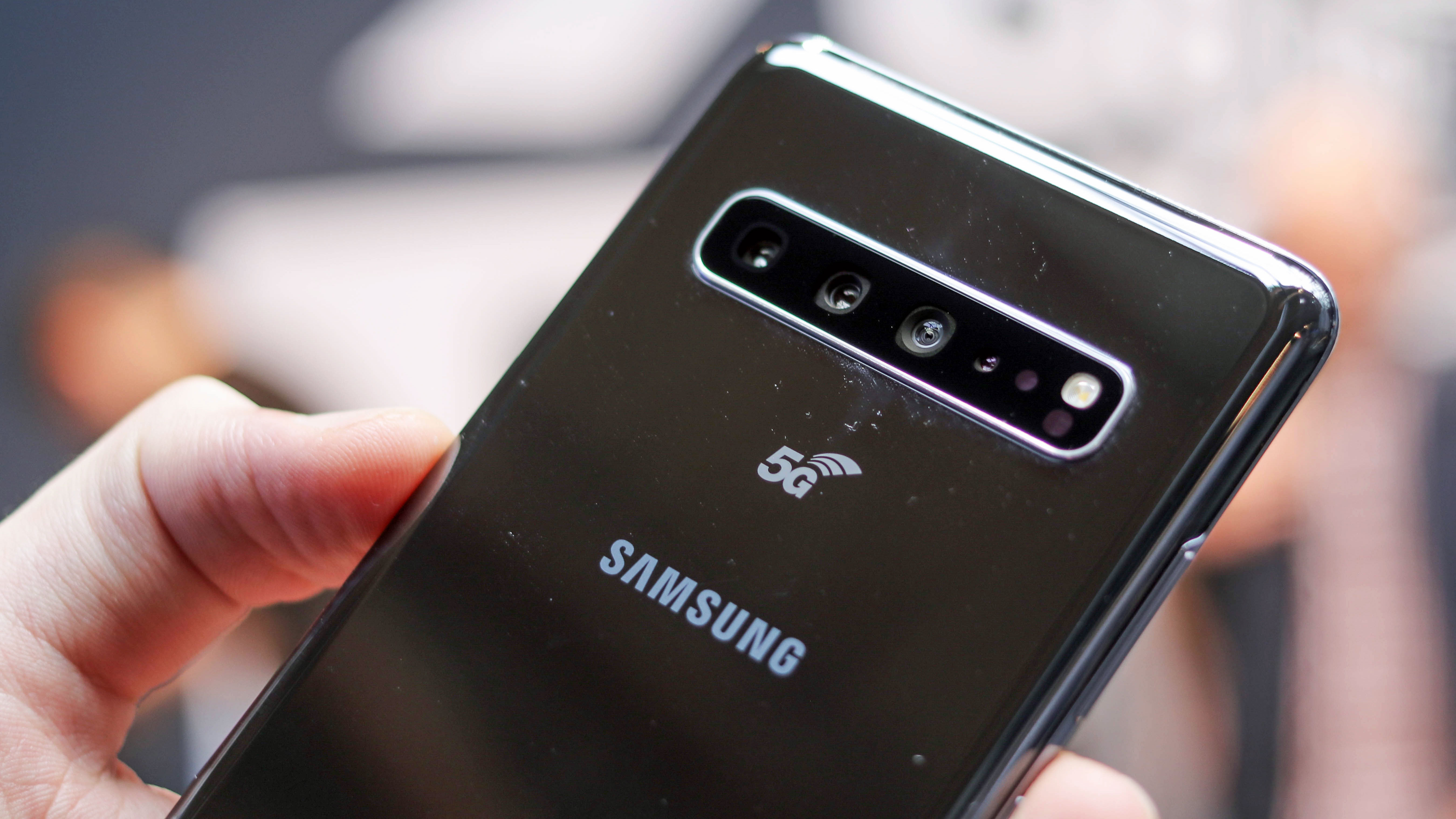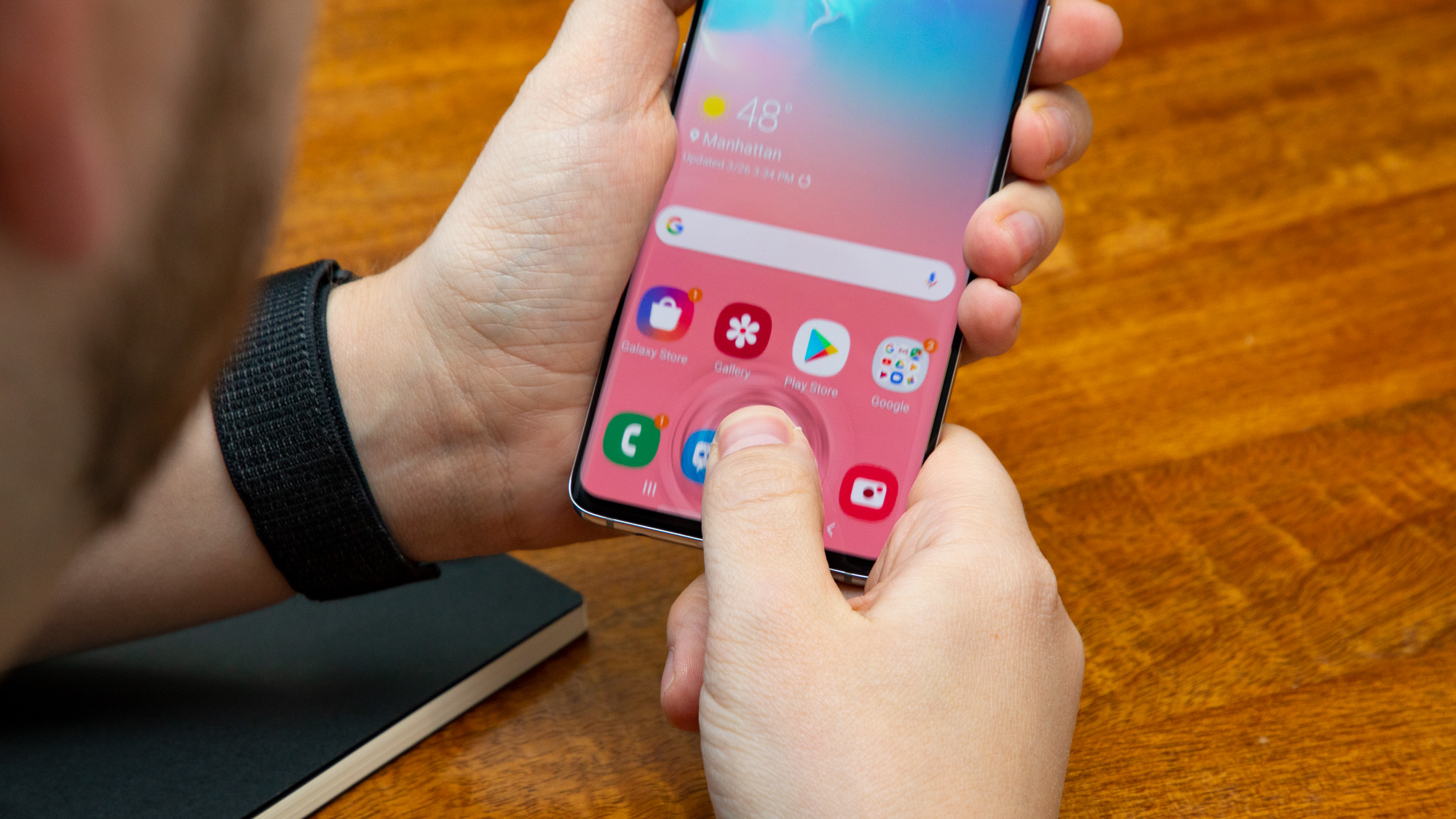Snapdragon 855 Plus: phones list, specs and benchmarks
Here's what the Snapdragon 855 Plus can do and all the phones coming with it

There's a good chance that the Qualcomm Snapdragon 855 chipset is powering your smartphone if you've picked up a new device in 2019 that runs Android. But we're even starting to see the more powerful Snapdragon 855 Plus announced to appear in upcoming phones.
This small, 7nm chip delivers some impressive performance benchmarks for the new Samsung Galaxy S10 Plus, LG G8, and OnePlus 7 Pro, among several other phones, many of which appear on our best Android phones list.
The powerful Snapdragon 855 aims to help usher in the future of mobile phones, with faster speeds, in-screen fingerprint sensor capabilities, enhanced bokeh in portrait modes, and even 5G networking on some devices.
Qualcomm has been at the core of many 5G phones, though it's lagged behind the Apple A-series chips in the past. Good news: we've found the gap is closing between the Snapdragon 855 and Apple's A12 Bionic chipset in the iPhone XS and iPhone XR.
The Snapdragon 855 Plus, which Qualcomm just introduced, is a refined version of the chipset that empowers gaming, AI, and XR. But what's the difference - and which phones have already been announced to run the beefier chipset? Read on to find out.
Snapdragon 855 Plus phones list
- Asus ROG Phone 2
- Samsung Galaxy Note 10 (rumored)
Snapdragon 855 Plus specs and benchmarks
We never expected Qualcomm to introduce a souped-up version of the Snapdragon 855 chip they introduced last fall, but it happened - and some high-powered flagships are getting it. Not just the gaming phones, either - the flagship Android phones are, too.
The Snapdragon 855 Plus is meant to empower gaming, AI, and XR beyond the capabilities of the original chip, Qualcomm explained in a press release. Compare the spec lists (Snapdragon 855, and Snapdragon 855 Plus) and you'll find not much has changed - aside from a higher 2.96 GHz clock speed in the Qualcomm Kryo 485 Octa-core CPU powering both (up from 2.84 GHz).
Sign up for breaking news, reviews, opinion, top tech deals, and more.
The Adreno 640 GPU packed in the Snapdragon 855 Plus 'offers a 15% increase' of...presumably performance...over the standard Snapdragon 855.
In other words, this slight increases in performance will assumedly raise the performance ceiling for tasks - like gaming or AI processing - that require a lot of the chipset's resources.
Given that the chipset was only announced in mid-July, only a handful of phones announced that they'll pack the Snapdragon 855 Plus - predictably, gaming phones like the Asus ROG Phone 2 - while others have been rumored to get it, like the Samsung Galaxy Note 10. Curiously, the latter is a flagship, meaning this chipset might not just appeal to gaming-focused phones.
Is it worth upgrading to a phone with the Qualcomm Snapdragon 855 chipset? What exactly can it do over last year's Snapdragon 845 chip? Below, we've listed all of the phones you'll find it in and what it's capable of.
Snapdragon 855 phones list
- Samsung Galaxy S10 family (S10, S10 Plus, S10e, S10 5G)
- Samsung Galaxy Fold
- LG G8
- LG V50
- OnePlus 7 / OnePlus 7 Pro (including 5G model)
- Sony Xperia 1
- Oppo Reno 10x Zoom
- Oppo Reno 5G
- Asus Zenfone 6
- Vivo iQOO
- Xiaomi Mi 9
- Xioami Redmi K20 Pro
- Xioami Black Shark 2
- Xioami Mi Mix 3 (including 5G model)
- ZTE Nubia Red Magic 3
- ZTE Axon 10 Pro (including 5G model)
- Lenovo Z6 Pro (including 5G model)
- Lenovo Z5 Pro GT
- Meizu 16s

Snapdragon 855 specs and benchmarks
The Snapdragon 855 specs deliver a major improvement over the Snapdragon 845, and it's almost enough to keep up with the Apple's A12 Bionic chipset. That's big news because, and here's the dirty little secret, the 845 was beaten by Apple's A12 chip and even the prior year's A11 chipset.
Qualcomm aimed the Snapdragon 855 at righting this wrong, with a smaller 7nm chip that vastly improves efficiency over its prior 10nm chipsets. At the heart of the chipset is the Kryo 485 CPU, and that's where the biggest gains are. It's sees a 45% performance uplift on the Snapdragon 845 CPU, which Qualcomm says is the largest ever performance increase for a Snapdragon chipset.
In benchmarks, it has shown considerable performance already. Running Geekbench 4 on the Samsung Galaxy S10 5G we saw a single-core score of 3,442 and a multi-core score of 11,042. That second score is close to the 11,465 score achieved by the iPhone XS Max in our testing. It may not have exceed the A12, but it's done a great job catching up.
Combined with 5G speeds via the X50 modem, this can give us wholly faster phones. The Snapdragon 855 chipset will also have better antennas, allowing for you to download 2Gbps LTE and, with 60GHz Wi-Fi (and world's first), speeds up to 10Gbps.

Snapdragon 855 5G phones
The top-tier Snapdragon 855 have 5G connectivity, though they're only available in certain regions. So far we've tested the Samsung Galaxy S10 5G, LG V50, and OnePlus 7 Pro 5G in the US and UK.
While most other phones are connecting to 4G LTE networks for their high-speed data connectivity, new phones with the Snapdragon 855's X50 5G modem can connect to the new 5G networks.
The promise of 5G is at present a bit dubious, but for those who want to experience the fastest consumer cellular speeds available, 5G is the only answer. We've been on the ground with the Samsung Galaxy S10 5G to test it's 5G speeds, and we saw it hit over 1.4Gbps.
What do those speeds mean for you? Well, to paint a picture, we downloaded a full season of Stranger Things from Netflix in just 38 seconds. Downloading the same season on the iPhone XS Max on 4G took one hour and 16 minutes.
The speed difference is incredible where 5G is available, and the Snapdragon 855 makes that possible. Carrier offerings of 5G service is fairly limited right now, with few regions covered, and connectivity limited even where there is service. But, when a 5G tower is within reach, the speed is undeniable.

Better photos and XR experiences
Cameras get a boost thanks to the Snapdragon 855 chipset and what's being touted as the world's first computer vision image signal processor (CV-ISP). This means there's a chip dedicated to processing your photos and videos.
Portrait mode is be available in video via the Snapdragon 855 chip, allowing you to capture 4K HDR with depth sensing even at 60 frames per second. So far, we've seen this capability in the LG G8, though we're waiting for more phonemakers to fine-tune the effect.
The chipset also supports HDR10+ video capture and over a billion colors with 10-bit color, and sure enough, the Samsung Galaxy S10 series finally got this advanced version of HDR (Samsung phones lacked HDR video capture before).
Photos get other new tricks we're waiting for phones to support in 2019, like object segmentation and object replacement. A few phones makers have tried their hand at Cinemagraph modes (LG V40, Moto Z3), but it hasn't been pretty. This can enhance the moving picture effect with the feature being supported on the chipset itself.

The Snapdragon 855 lets more phones say goodbye to JPEG, as it supports the HEIF (High Efficiency Image File) format for capture and playback for the primary image file format. This is the first time a Snapdragon chip has supported HEIF for photos and video.
Only, Qualcomm said "We're going to enable everything else Apple didn’t." This means it can store all sorts of data within the file and access the depth map to edit things later. You can store Wide, Super Wide, Telephoto, Portrait modes all on a single file. This is helpful as more and more phones are combining several camera sensors.
Deep learning is also a big focus for the Snapdragon 855 chip. Qualcomm has worked with Nalbi, an AI software firm focused on vision solutions. At the Snapdragon 855 launch event, they demoed a short video showing a woman's hair color changing.
Qualcomm is still pushing XR, which is the collective term used to to describe virtual reality (VR) and and argument reality (AR). It showed a sophisticated visual overlay through a pair of goggles while someone skiing down a mountain. It was a futuristic heads-up display (HUD) seen through some goggles, but there's no telling if this will in fact come out for consumer devices using the Snapdragon 855 chipset.
Whether or not most these capabilities actually get implemented depends on the phone manufacturers.

In-screen fingerprint sensor security
Qualcomm's Snapdragon 855 chipset came alongside the launch of its 3D Sonic Sensor. The company had long been working on an in-screen fingerprint sensor solution based on ultrasonic technology, and now its coming built into some Qualcomm-powered smartphones.
Yes, some phones without the Snadpragon 855 have already shown off this type of fingerprint scanner, but those had been optical sensors. Ultrasonic fingerprint sensor technology is said to be superior to the optical under-the-glass tech. And Qualcomm's plans for it have finally come to fruition in the Snapdragon 855.
The big beneficiary so far has been the Samsung Galaxy S10 phone series, with an ultrasonic in-screen fingerprint sensor backed by the Snapdragon 855.
Qualcomm calls its 3D Sonic Sensor the "DSLR of fingerprint sensors". It's meant to work even when your finger is wet or dirty. Generally, it works better than optical sensors, according to our tests, but the initial rollout was rough. Samsung issued a couple of patches that fixed things up.

Better phone visuals
You may think how good your phone's display looks come down to the display itself, but the chipset has a part of play as well.
The Snapdragon 855 supports quality visuals, thankfully. It allows 4K, HDR10+ and Dolby Vision playback, and the Elite Gaming experience even enables HDR gaming on mobile. It supports 10-bit color depths and the Rec2020 color gamut.
This will allow devices using the Snapdragon 855 chipset to push the display quality to a cinematic level.
More Snapdragon 855 phones to come
We're seeing different manufactures implement the Snapdragon 855's capabilities in different ways. Some go ahead with features like the ultra-sonic finger print sensor, some actually use video portrait mode, and others include the 5G modem. Some of them put it into a premium flagship while others opt for a more budget-like design while milking the chipset for its high performance.
No two phones with the Snapdragon 855 chipset are exactly alike, so it's worth taking note of what features each phone actually promises to offer. The one thing you can expect consistently, though, is fast performance.
We'll likely see more phones use the Snapdragon 855 chipset in the future: the Google Pixel 4, Samsung Galaxy Note 10 and maybe the OnePlus 7T, all before we even start talking about the Qualcomm Snapdragon 865, or whatever numbering scheme going with in December.
